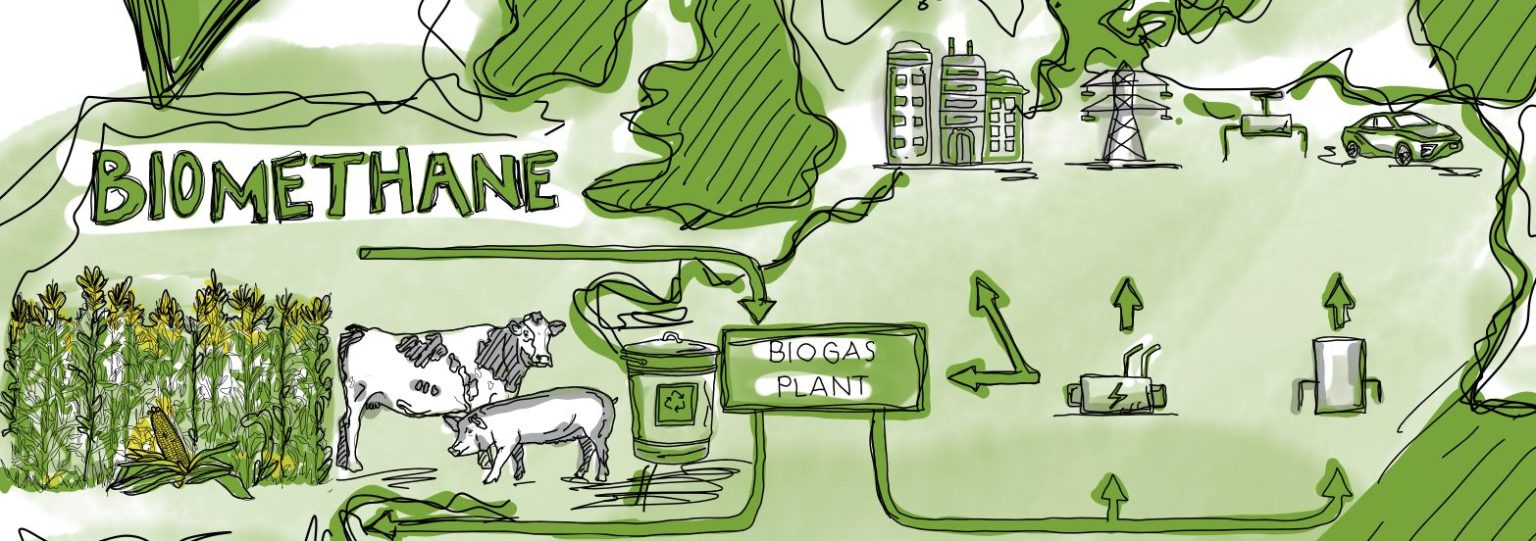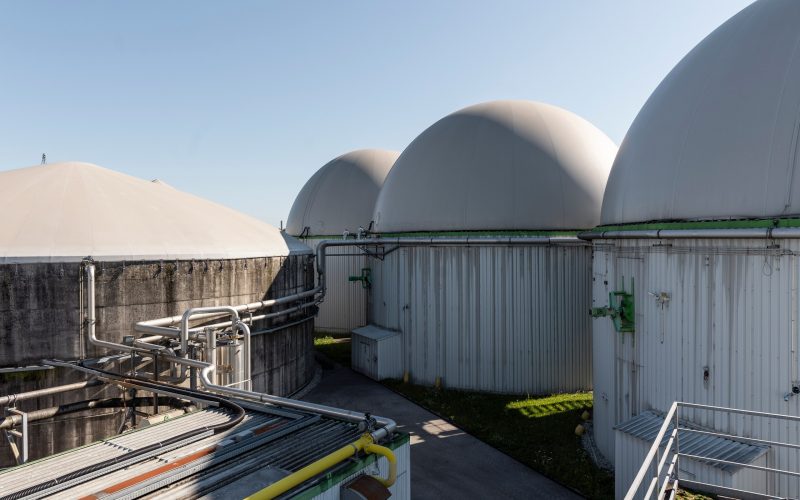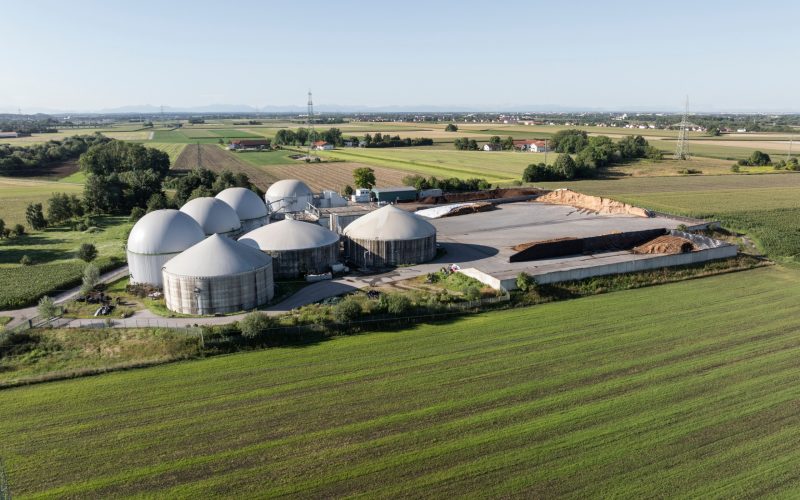CEENERGYNEWS: Can Poland and Ukraine lead Europe in bioenergy?
In this article from the CEENERGYNEWS online resource, author Philip Derewenda presents an analysis of the biogas and biomethane sectors in Poland and Ukraine. We advise you the article from an international publication and the comments provided by the Chairman of the board of the Bioenergy Association of Ukraine Georgii Geletukha, member of the board of the Bioenergy Association of Ukraine Maksym Sysoev, as well as other experts.

Poland – can its potential overtake the UK and France?
According to the European Biogas Association’s 2022 Statistical Report, combined biogas and biomethane production has been on a consecutive rise since 2011 – reaching 18.4 billion cubic metres (bcm) at the end of last year. Poland is among the countries looking to emulate this continent-wide interest in bioenergy. Whilst there are currently no biomethane plants in Poland, the country may soon join the leading players in the European biogas market.
At present, Poland has 301 biogas plants with a total of 231 megawatts (MW) of capacity where half of these are agricultural and one-quarter each landfill gas and sewage gas, according to data from ENDS Waste & Bioenergy. By 2025, the country looks to add up to 800 new biogas plants and reach its target of 1 gigawatt (GW) of electricity capacity, according to the biogas developer, BioAlians. Interestingly, should this capacity target materialise, Poland’s increased capacity would be equivalent to the entire current capacity of major European players like the United Kingdom and France.
Poland’s biogas potential is significant and, unfortunately, untapped thus far, says Iwona Waksmundzka-Olejniczak, a Member of the Management Board at PKN ORLEN. “The estimates we have indicate that it ranges from 4 to 8 billion cubic metres (bcm) in terms of biomethane equivalent. For comparison, the production of natural gas in Poland amounts to almost 4 bcm. Even if this potential isn’t used in full, biogas and biomethane may be an important element for balancing the Polish gas and energy market,” she adds.
The biggest Polish energy company, ORLEN Group has previously declared its interest in renewable gases and as Ms Waksmundzka-Olejniczak tells CEENERGYNEWS, this interest continues to grow amid the green transition. From the demand side, ORLEN sees a growing number of recipients, not only because of the comparison of the profitability of biomethane in relation to natural gas with allowances to CO2 emissions but also for regulatory reasons – for example, the share of “green” heat in its sales, she says. “After 2035, it will not be possible to maintain the status of an effective district heating system based solely on cogeneration – it will be necessary to use heat from RES [renewable energy sources] and waste. The requirements for liquid fuels are also growing, where the use of biomethane and bioLNG can also facilitate their fulfilment,” she adds.
“It is also worth remembering that the competitiveness of energy generation sources is not the only criteria we should pay attention to. From the systemic point of view, stable energy production in a biogas plant is important, even if the valuation of this energy does not directly indicate an advantage over, for example, a photovoltaic source. It is especially invisible in analyses comparing the unit cost of energy production (LCOE) of various generation sources, which by definition ignore the aspect of system utility,” Ms Waksmundzka-Olejniczak highlights.
Looking ahead, a key obstacle in the future development of this sector looks to be the country’s regulatory framework, similar to what we saw in the analysis on green hydrogen. “Clear and consistent regulations are necessary for the development of the biomethane market. There are many issues that need to be enshrined in law, including the creation of a support system that will allow for the involvement of investment funds in this sector on a larger scale,” Ms Waksmundzka-Olejniczak tells us.
Ukraine – notable progress, despite the war
In many ways, Ukraine has defied most (if not all) odds when it comes to the transition to renewables. From building more onshore wind farms than the UK in the past 12 months, to opening its first biomethane plant earlier this year. In April, Hals Agro, a Ukrainian group of agricultural companies, commissioned the country’s inaugural biomethane plant by retrofitting one of the plant’s six biogas plants (6.9 MW in total capacity) with a biomethane production module. The plant is expected to inject up to three million cubic metres (mcm) of biomethane into the Ukrainian gas system, Maksym Sysoiev, Partner at Deloitte and leading expert at the Ukrainian Bioenergy Association tells CEENERGYNEWS.
Looking at post-war Ukraine, a boom in the biogas development is expected in Ukraine, said Georgiy Geletukha, Head of the Board at the Ukrainian Bioenergy Association in an expert article for Gas Transmission System Operator of Ukraine (GTSOUA) in September 2022. “Seventy-seven biogas plants already produce up to 260 mcm per year, of which it is possible to have about 150 mcm of biomethane annually,” he added.
The potential and opportunities for Ukraine’s bioenergy sectors are vast – particularly when looking at its strong resource base, Kateryna Polyakova, Director at the European-Ukrainian Energy Agency tells CEENERGYNEWS. Ukraine has the necessary conditions for liquid biofuel generation both in terms of land resources and plant potential and in terms of the availability of its own production facilities, the Ukrainian Bioenergy Association said.
Translating this potential into numbers, Ukraine could produce around 9.7 bcm of biomethane, per year, according to the Ukrainian Bioenergy Association. To put it into perspective, Ukraine’s gas consumption amounted to 20.1 bcm in 2022. In terms of production targets, Ukraine may reach 1 bcm of biomethane by 2030 and 4.5 bcm by 2050, says Mr Sysoiev.
For Ukraine, bioenergy is a “strategic direction” in renewable energy development, considering the country’s high dependence on imported energy, as well as the great potential of biomass available for energy production, Ukrainian Bioenergy Association said. At present, bioenergy accounts for around 70 per cent of all renewables in Ukraine.
Alongside new production facilities, notable progress has also been seen on the regulatory side. “At the state level, we consolidated efforts to create a legal framework for developing the biomethane market. The Parliament adopted the relevant law, the Government approved the Procedure for the functioning of the biomethane register, developed by the State Agency on Energy Efficiency and Energy Saving of Ukraine (SAEE) and the Ministry of Energy, and the NEURC amended GTS and GDS Codes to allow the supply of biomethane into the grid,” said Valerii Bezus, Head of the State Agency on Energy Efficiency of Ukraine in the expert article for Gas Transmission System Operator of Ukraine (GTSOUA).
Last week (8 June), Ukraine’s National Commission for State Regulation in Energy and Utilities amended the grid codes and simplified access for the Ukrainian biomethane plants in the system, which is expected to remove a major obstacle related to the connection of biomethane plants to the system, Mr Sysoiev says.
However, other obstacles remain. Lack of clarity on whether the export of biomethane is/will be allowed and whether there will be sufficient regulations to enable the export as well as a lack of financing of such projects in Ukraine given the ongoing war, Mr Sysoiev tells us. “It appears that there is a will to resolve the problem of biomethane export, but it takes time. Availability of reasonable financing depends on the end of the ware and availability of the insurance products for the construction and operation of biomethane plants. Otherwise, interest rates and other conditions of the banks would not be favourable for the developers,” he adds.
Source: CEENERGYNEWS


